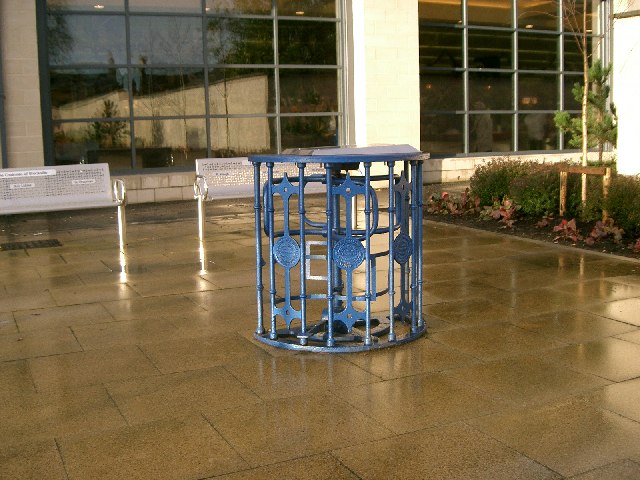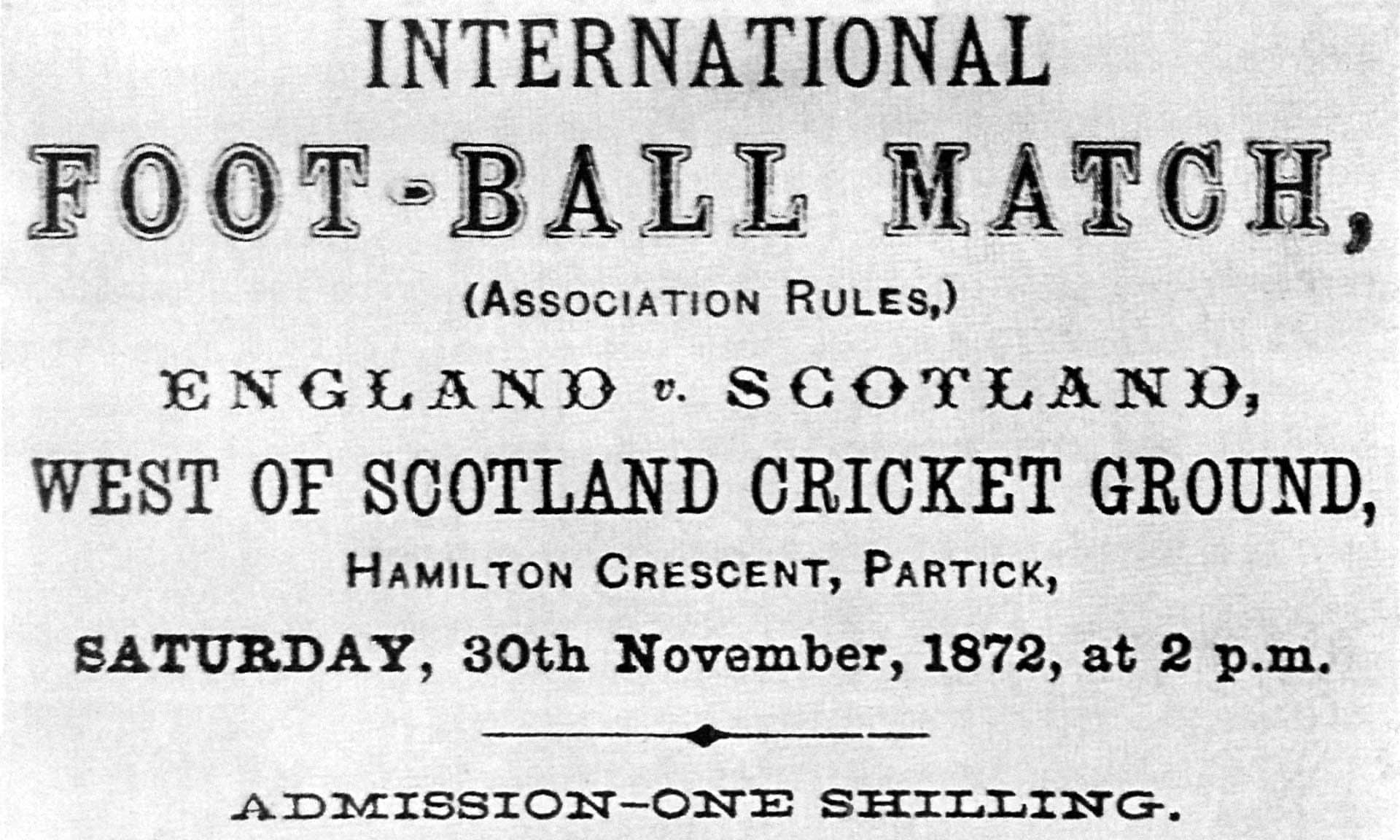|
1907–08 Aberdeen F.C. Season
Aberdeen F.C. competed in Scottish Football League Division One and the Scottish Cup in season 1907–1908. Overview This was Aberdeen's fifth season and their third in the top flight of Scottish football. Aberdeen improved on their league finish from the previous season, finishing eighth place out of 18 clubs. They also had their best season to date in the Scottish Cup, going all the way to the semi-final but losing 0–1 to Celtic. Notable new signings included Donald Colman from Motherwell. In this season, Willie Lennie became the first Aberdeen player to be capped for Scotland when he played against Wales in March 1908. Results Scottish Division One Final standings Scottish Cup Squad Appearances & Goals References Notes * {{DEFAULTSORT:1907-08 Aberdeen F.C. season Aberdeen F.C. seasons Aberdeen Aberdeen ( ; ; ) is a port city in North East Scotland, and is the List of towns and cities in Scotland by population, third most po ... [...More Info...] [...Related Items...] OR: [Wikipedia] [Google] [Baidu] |
Jimmy Philip
Jimmy Philip (1863 – 12 October 1930) was the first coach of Scottish football club Aberdeen F.C. He was in charge of the club virtually from its foundation in 1903 until his retirement in 1924. Early life Philip was the only son of four children. His father James Philip (born 1833) and mother Jane Philip (born 1830) were both Brass Founders. Their daughters Jane Philip (1861) Eliza Philip (1864) were both Envelope Makers and the youngest Isabella (1872) was a scholar. Philip married Mary Ann Forsyth (1864–1937) and had five children: James, Dot, Lily, Mary and George John (1905–1972). Philip was a native Aberdonian, he had a wide range of sporting interests, and he had proposed to underwrite the first overseas tour by a Scottish international team. He was also a referee, although by profession he was a wood-turner. [...More Info...] [...Related Items...] OR: [Wikipedia] [Google] [Baidu] |
Ibrox Stadium
Ibrox Stadium is a football stadium on the south side of the River Clyde in the Ibrox area of Glasgow, Scotland. The home of Scottish Premiership team Rangers, Ibrox is the third-largest football stadium in Scotland, with an all-seated capacity of 51,700. The stadium was designed by renowned football stadium architect Archibald Leitch, with renovations to the stadium between 1978 and 1981, as well as 1990 and 1991, being designed by The Miller Partnership and Gareth Hutchison respectively. Opened as Ibrox Park in 1899, it suffered a disaster in 1902 when a wooden terrace collapsed. Vast earthen terraces were built in its place, and a main stand, now a listed building, in 1928. A British record crowd of 118,567 gathered in January 1939 for a league match with Celtic. After another disaster in 1971, the stadium was largely rebuilt. The vast bowl-shaped terracing was removed and replaced by three rectangular, all-seated stands by 1981. After renovations were completed in 19 ... [...More Info...] [...Related Items...] OR: [Wikipedia] [Google] [Baidu] |
Tynecastle Stadium
Tynecastle Park, also known as Tynecastle Stadium, is a association football, football stadium in the Gorgie area of Edinburgh, which is the home ground of Scottish Professional Football League club Heart of Midlothian F.C., Heart of Midlothian (Hearts). A UEFA stadium categories, UEFA category four stadium, it has also hosted Scotland national football team, Scotland international matches, and been used as a neutral venue for Scottish Cup and Scottish League Cup semi-finals. Tynecastle has a seating capacity of , which makes it the sixth-largest List of football stadiums in Scotland, football stadium in Scotland. Hearts have played at the present site of Tynecastle since 1886. History Heart of Midlothian After Heart of Midlothian F.C., Hearts was formed in 1874, the club played at sites in the Meadows (park), the Meadows, Powburn and Powderhall. Hearts first moved to the Gorgie area, in the west of Edinburgh, in 1881. This pitch, known as "Tynecastle Park" or "Old Tynecastle ... [...More Info...] [...Related Items...] OR: [Wikipedia] [Google] [Baidu] |
Heart Of Midlothian F
The heart is a muscular organ found in humans and other animals. This organ pumps blood through the blood vessels. The heart and blood vessels together make the circulatory system. The pumped blood carries oxygen and nutrients to the tissue, while carrying metabolic waste such as carbon dioxide to the lungs. In humans, the heart is approximately the size of a closed fist and is located between the lungs, in the middle compartment of the chest, called the mediastinum. In humans, the heart is divided into four chambers: upper left and right atria and lower left and right ventricles. Commonly, the right atrium and ventricle are referred together as the right heart and their left counterparts as the left heart. In a healthy heart, blood flows one way through the heart due to heart valves, which prevent backflow. The heart is enclosed in a protective sac, the pericardium, which also contains a small amount of fluid. The wall of the heart is made up of three layers: epic ... [...More Info...] [...Related Items...] OR: [Wikipedia] [Google] [Baidu] |
Third Lanark A
Third or 3rd may refer to: Numbers * 3rd, the ordinal form of the cardinal number 3 * , a fraction of one third * 1⁄60 of a ''second'', i.e., the third in a series of fractional parts in a sexagesimal number system Places * 3rd Street (other) * Third Avenue (other) * Highway 3 Music Music theory * Interval number of three in a musical interval **Major third, a third spanning four semitones **Minor third, a third encompassing three half steps, or semitones ** Neutral third, wider than a minor third but narrower than a major third ** Augmented third, an interval of five semitones ** Diminished third, produced by narrowing a minor third by a chromatic semitone * Third (chord), chord member a third above the root *Degree (music), three away from tonic **Mediant, third degree of the diatonic scale **Submediant, sixth degree of the diatonic scale – three steps below the tonic ** Chromatic mediant, chromatic relationship by thirds *Ladder of thirds, similar ... [...More Info...] [...Related Items...] OR: [Wikipedia] [Google] [Baidu] |
Brockville Park
Brockville Park was a football stadium located on Hope Street in Falkirk, Scotland, north-west of the town centre. It was the home of Falkirk F.C. from 1885 until the end of 2002–03 Scottish football season.50 Fascinating Falkirk Facts , stforum.co.uk. Retrieved 2011-06-26. The record attendance at Brockville Park was 23,100 on 21 February 1953 in a match against .Team Profile & History , Scottish Premier League. Retrieved 2011-06-26. [...More Info...] [...Related Items...] OR: [Wikipedia] [Google] [Baidu] |
Falkirk F
Falkirk ( ; ; ) is a town in the Central Lowlands of Scotland, historically within the county of Stirlingshire. It lies in the Forth Valley, northwest of Edinburgh and northeast of Glasgow. Falkirk had a resident population of 32,422 at the 2001 UK Census. The population of the town had risen to 34,570 according to a 2008 estimate, making it the 20th most populous settlement in Scotland. Falkirk is the main town and administrative centre of the Falkirk council area, which has an overall population of 156,800 and inholds the nearby towns of Grangemouth, Bo'ness, Denny, Camelon, Larbert and Stenhousemuir, and the cluster of Braes villages. The town is at the junction of the Forth and Clyde and Union Canals, a location which proved key to its growth as a centre of heavy industry during the Industrial Revolution. In the eighteenth and nineteenth centuries, Falkirk was at the centre of the iron and steel industry, underpinned by the Carron Company in nearby Carron. Th ... [...More Info...] [...Related Items...] OR: [Wikipedia] [Google] [Baidu] |
Kilmarnock F
Kilmarnock ( ; ; , ), meaning "the church of Mernóc", is a town and former burgh in East Ayrshire situated in southwest Scotland. The town has served as the administrative centre of East Ayrshire Council since 1996 and is the region's main commercial and industrial centre. The town has a total of List of listed buildings in Kilmarnock, East Ayrshire, 284 listed buildings and structures as designed by Historic Environment Scotland, including the Dick Institute, Dean Castle, List of listed buildings in Kilmarnock, East Ayrshire, Loanhead School and the original 1898 building of Kilmarnock Academy, with post–war developments of the controversial 1970s regeneration such as The Foregate and Clydesdale Bank building being considered for listed building status. The first passenger conveying railway in Scotland originated in Kilmarnock in 1812 as a horse-drawn plateway and became known as the Kilmarnock and Troon Railway. The first printed collection of works by Scottish poet Ro ... [...More Info...] [...Related Items...] OR: [Wikipedia] [Google] [Baidu] |
Partick Thistle F
Partick (, Scottish Gaelic: ''Partaig'') is an area of Glasgow on the north bank of the River Clyde, just across from Govan. To the west lies Whiteinch, to the east Yorkhill and Kelvingrove Park (across the River Kelvin), and to the north Broomhill, Hyndland, Dowanhill, Hillhead, areas which form part of the West End of Glasgow. Partick was a Police burgh from 1852 until 1912 when it was incorporated into the city.Second City of The Empire: 1830s to 1914 from theglasgowstory.com. Retrieved 22 December 2011. Partick is the area of the city most connected with the Highlands, and several Gaelic agencies, such as the Gaelic Books Council ( |
Dens Park
Dens Park is a football stadium in Dundee, Scotland, which is the home of club Dundee F.C. and has a capacity of . Tannadice Park, the home of rivals Dundee United, is just 200 yards (183 metres) away. History Dundee moved to "Dens" from their first stadium at Carolina Port in 1899. Dens Park hosted three full international matches involving the Scotland men's team, in March 1904, March 1908, and December 1936. All three games were Home Internationals against Wales. The record attendance at Dens Park is 43,024, which was set in 1953 when Dundee played host to Rangers in the Scottish Cup. Following Dundee's promotion to the newly-founded Scottish Premier League in 1998, Dens Park had to be redeveloped to meet SPL seating capacity rules. Existing concrete terraces on the eastern and western ends of the ground were removed and two 3,000-seat stands were built in a record time of 82 days for the start of the 1998–99 season. The near-identical single-tier stands were named ... [...More Info...] [...Related Items...] OR: [Wikipedia] [Google] [Baidu] |
Dundee F
Dundee (; ; or , ) is the List of towns and cities in Scotland by population, fourth-largest city in Scotland. The mid-year population estimate for the locality was . It lies within the eastern central Lowlands on the north bank of the Firth of Tay, which feeds into the North Sea. Under the name of Dundee City, it forms one of the 32 Council areas of Scotland, council areas used for local government in Scotland. Within the boundaries of the Shires of Scotland, historic county of Angus, Scotland, Angus, the city developed into a burgh in the late 12th century and established itself as an important east coast trading port. Rapid expansion was brought on by the Industrial Revolution, particularly in the 19th century when Dundee was the centre of the global jute industry. This, along with its other major industries, gave Dundee its epithet as the city of "jute, jam and journalism". With the decline of traditional industry, the city has adopted a plan to regenerate and reinvent ... [...More Info...] [...Related Items...] OR: [Wikipedia] [Google] [Baidu] |








